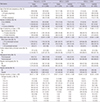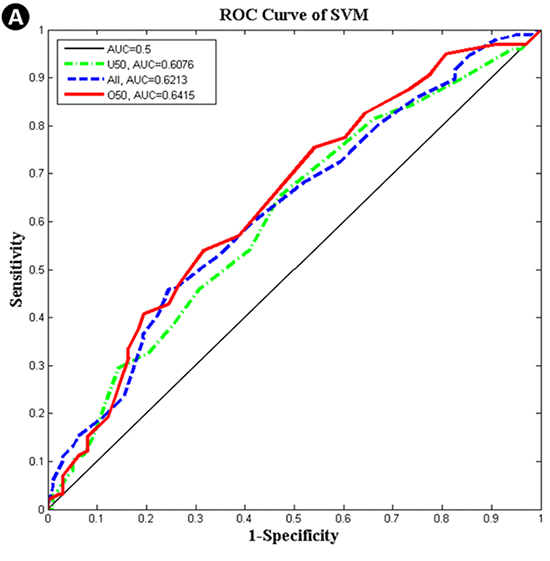1. Shin HR, Joubert C, Boniol M, Hery C, Ahn SH, Won YJ, Nishino Y, Sobue T, Chen CJ, You SL, et al. Recent trends and patterns in breast cancer incidence among Eastern and Southeastern Asian women. Cancer Causes Control. 2010; 21:1777–1785.
2. Survival analysis of Korean breast cancer patients diagnosed between 1993 and 2002 in Korea: a Nationwide Study of the Cancer Registry. J Breast Cancer. 2006; 9:214–229.
4. Gail MH, Brinton LA, Byar DP, Corle DK, Green SB, Schairer C, Mulvihill JJ. Projecting individualized probabilities of developing breast cancer for white females who are being examined annually. J Natl Cancer Inst. 1989; 81:1879–1886.
5. Rockhill B, Spiegelman D, Byrne C, Hunter DJ, Colditz GA. Validation of the Gail et al. model of breast cancer risk prediction and implications for chemoprevention. J Natl Cancer Inst. 2001; 93:358–366.
6. Boyd CR, Tolson MA, Copes WS. Evaluating trauma care: the TRISS method. Trauma Score and the Injury Severity Score. J Trauma. 1987; 27:370–378.
7. Levy SM, Herberman RB, Maluish AM, Schlien B, Lippman M. Prognostic risk assessment in primary breast cancer by behavioral and immunological parameters. Health Psychol. 1985; 4:99–113.
8. Choi JP, Han TH, Park RW. A hybrid bayesian network model for predicting breast cancer prognosis. J Korean Soc Med Inform. 2009; 15:49–57.
9. Kiyan T, Yildirim T. Breast cancer diagnosis using statistical neural networks. IU-JEEE. 2004; 4:1149–1153.
10. Ayer T, Alagoz O, Chhatwal J, Shavlik JW, Kahn CE Jr, Burnside ES. Breast cancer risk estimation with artificial neural networks revisited: discrimination and calibration. Cancer. 2010; 116:3310–3321.
11. Burnside ES, Rubin DL, Fine JP, Shachter RD, Sisney GA, Leung WK. Bayesian network to predict breast cancer risk of mammographic microcalcifications and reduce number of benign biopsy results: initial experience. Radiology. 2006; 240:666–673.
12. Lee SM. Comparisons of predictive modeling techniques for breast cancer in Korean women. J Korean Soc Med Inform. 2008; 14:37–44.
13. Smigal C, Jemal A, Ward E, Cokkinides V, Smith R, Howe HL, Thun M. Trends in breast cancer by race and ethnicity: update 2006. CA Cancer J Clin. 2006; 56:168–183.
14. Centers for Disease Control and Prevention. United States Cancer Statistics: 1999-2011 Cancer Incidence and Mortality Data. accessed on 08 December 2014. Available at
www.cdc.gov/uscs.
15. Jung KW, Park S, Kong HJ, Won YJ, Lee JY, Park EC, Lee JS. Cancer statistics in Korea: incidence, mortality, survival, and prevalence in 2008. Cancer Res Treat. 2011; 43:1–11.
16. Park B, Ma SH, Shin A, Chang MC, Choi JY, Kim S, Han W, Noh DY, Ahn SH, Kang D, et al. Korean risk assessment model for breast cancer risk prediction. PLoS One. 2013; 8:e76736.
17. McPherson K, Steel CM, Dixon JM. ABC of breast diseases. Breast cancer-epidemiology, risk factors, and genetics. BMJ. 2000; 321:624–628.
18. Suzuki S, Kojima M, Tokudome S, Mori M, Sakauchi F, Fujino Y, Wakai K, Lin Y, Kikuchi S, Tamakoshi K, et al. Japan Collaborative Cohort Study Group. Effect of physical activity on breast cancer risk: findings of the Japan collaborative cohort study. Cancer Epidemiol Biomarkers Prev. 2008; 17:3396–3401.
19. Won YJ, Sung J, Jung KW, Kong HJ, Park S, Shin HR, Park EC, Ahn YO, Hwang IK, Lee DH, et al. Nationwide cancer incidence in Korea, 2003-2005. Cancer Res Treat. 2009; 41:122–131.
20. Peduzzi P, Concato J, Kemper E, Holford TR, Feinstein AR. A simulation study of the number of events per variable in logistic regression analysis. J Clin Epidemiol. 1996; 49:1373–1379.
21. Cortes C, Vapnik V. Support-vector networks. Mach Learn. 1995; 20:273–297.
22. Furey TS, Cristianini N, Duffy N, Bednarski DW, Schummer M, Haussler D. Support vector machine classification and validation of cancer tissue samples using microarray expression data. Bioinformatics. 2000; 16:906–914.
23. Rodriguez-Moguel L, Bega-Ramos B. Risk of breast cancer of low differentiation in tumors with estrogen-negative receptors. Ginecol Obstet Mex. 1999; 67:503–507.
24. Polat K, Güneş S. Breast cancer diagnosis using least square support vector machine. Digit Signal Process. 2007; 17:694–701.
25. Hecht-Nielsen R. Theory of the backpropagation neural network. In : Proceedings of the International Joint Conference on Neural Networks; Washington, D.C.: IEEE Press;1989. p. 593–605.
26. Pearl J. Probabilistic reasoning in intelligent systems: networks of plausible inference. San Mateo, CA: Morgan Kaufmann Publishers Inc.;1988.
27. Shapiro SS, Wilk MB. An analysis of variance test for normality (complete samples). Biometrika. 1965; 52:591–611.
28. Clemons M, Goss P. Estrogen and the risk of breast cancer. N Engl J Med. 2001; 344:276–285.
29. Park B. Development of sporadic and hereditary breast cancer risk assessment model in Korean women. Seoul: Seoul National University;2012. Dissertation.
30. Rokach L. Pattern classification using ensemble methods. Danvers, MA: World Scientific Pub. Co.;2010. Series in Machine Perception and Artificial Intelligence; vol 75.









 PDF
PDF ePub
ePub Citation
Citation Print
Print









 XML Download
XML Download